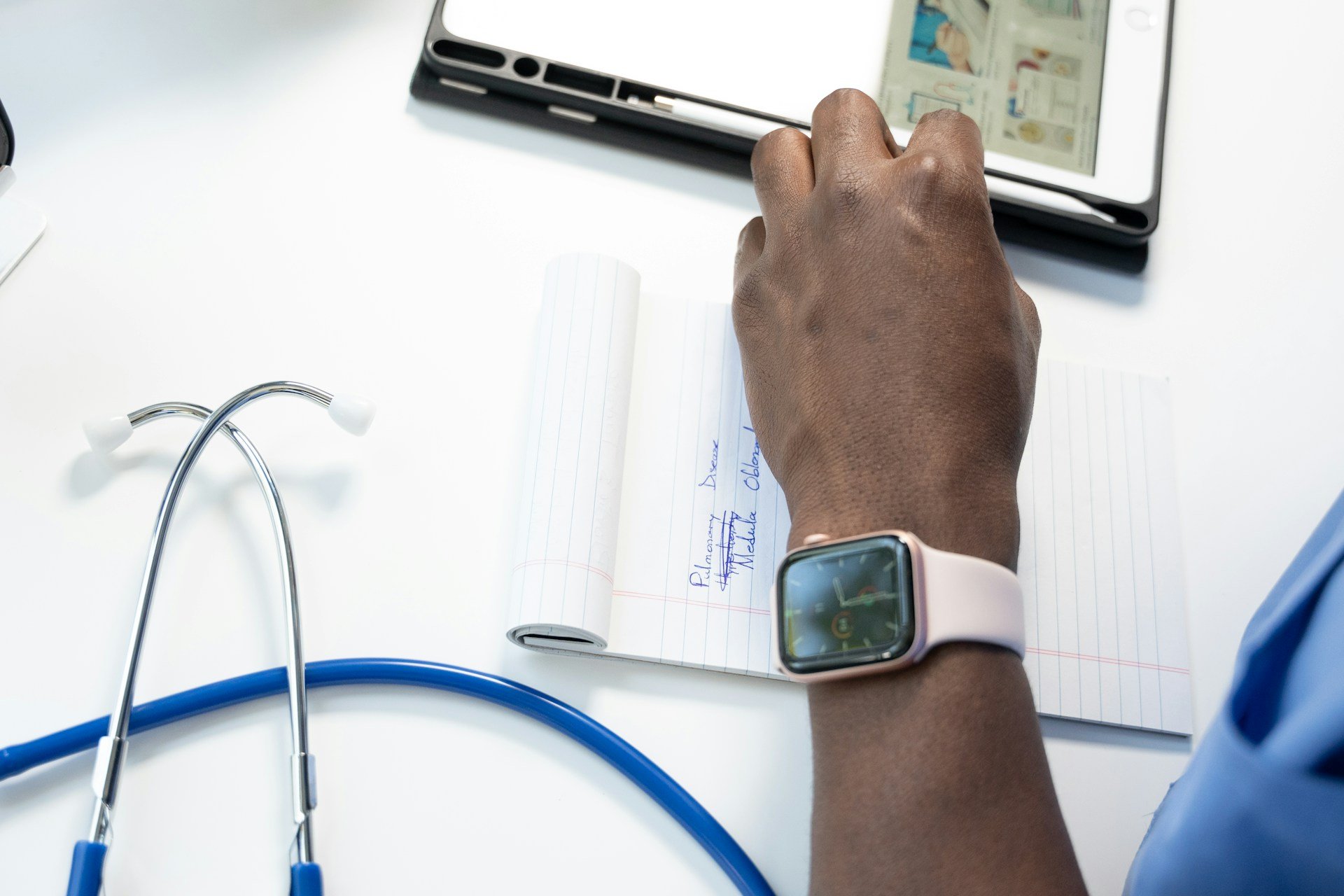Digital Biomarkers – An Industry Game Changer

Digital biomarkers refer to the quantifiable, physiological, and behavioural data collected and measured by means of digital devices. These devices include sensors, wearables, implantables, and mobile phones. Digital biomarkers offer a patient-centric approach to therapeutics with the attitude that no one device is applicable to all cases. In particular, sensor technology is selected on a case-to-case basis during a data analytics phase where the goal is to extract objective measures reflecting a typical disease manifestation. This information is used to align with targeted concepts of interest and enhance the value of medicine through objective or real-world patient data.
Developing Digital Biomarkers for Rheumatoid Arthritis: a GSK Case Study
While there are some broad cross therapy applications, each disease area has its own unique set of challenges and requirements, resulting in a diversity of applications across the GSK portfolio. The digital biomarkers team at GSK focuses on assessing efficacy, safety, and patient stratification. In his presentation, Valentin Hamy, Data Analytics Leader – Digital Biomarker at GSK focused on efficacy with a case study on rheumatoid arthritis where GSK aim to capture patient function for the generation of patient-centric endpoints.
Rheumatoid arthritis is a chronic autoimmune disease characterised by persistent inflammation of joints with chronic pain, stiffness, and swelling, leading to deformities and limited ability to perform daily activities. The joints most commonly affected by the disease are the wrists, the hands, the knees, the ankles, and the feet. Data collected in clinical trials presents an incomplete view of disease activity due to fluctuation and heterogeneity of daily symptoms. “Instead, digital technology such as wearable devices and mobile applications can enable continuous monitoring and objective assessments of the impact of rheumatoid arthritis”, Hamy claimed. Objective measures of physical function include sit-to-stand transition times, and joints range of motion, which are commonly used in clinical assessments of the condition although with high intra and inter tester variability.
Applications for Rheumatoid Arthritis:
In response, GSK has conducted several projects using real-world data to assess disease impact for rheumatoid arthritis. Conducted a few years ago, the PARADE study included the collection of real-world data from patients through an iPhone app. The Watch and mobile devicEs in the Assessment of Rheumatoid Arthritis Burden on daily LifE compared to Patient Reported Outcomes (weaRAble-PRO) is a pilot study building upon PARADE and using an iPhone app in combination with an Apple Watch allowing for continuous collection of accelerometer and a heart rate data. These digital devices enabled the supply of high-quality data to evaluate symptoms that matter to patients, such as morning stiffness, fatigue, pain, and sleep quality. The latest project leverages the UK Biobank actigraphy data to conduct a large-scale assessment of physical activity patterns.
According to Hamy, “the work conducted at GSK for the development of novel digital biomarkers in rheumatoid arthritis has led to a wealth of information found in data that can be accessed through advanced analytics tools”. He explained how digital biomarkers can benefit drug development in a number of disease areas by predicting and demonstrating changes in health outcomes. However, digital sensors data are different from any other type of data typically collected in clinical trials. Potential challenges include the fact that multiple source data although rich is also very complex. Hamy explained, “this requires specific considerations in terms of fitness for analysis, pre-processing and quality assessment which may vary depending on the study setting and the selected sensor or device”. Nevertheless, digital biomarker technology, science, and application continue to evolve rapidly. Projects such as PARADE and WeaRAble-PRO enable the transition from potential to validation and application of digital biomarkers in clinical trials.
Digital Biomarkers: Clinical Utility
David Nobbs, Digital Biomarker Disease Area Lead at Roche, observes that “while there are many opportunities in drug development, the industry still has a long way to go”. Currently, approximately 79% of drugs fail to launch not only due to safety and efficacy but also an inability to measure effectiveness. Accordingly, improved biomarkers are required. The latter can also significantly improve the average time it takes to progress a target identification to the market, which is approximately 14 years and increasing. According to Nobbs, “if treatment outcomes could be determined faster and in smaller sample sizes, this would reduce development time, bringing treatments to patients faster and at lower cost”. This, in turn, will have a significant impact on lowering the price of pharmaceuticals.
The advantages of measuring with digital health technology are numerous. As Derek Hill, Professor of Digital Health at the University College London, points out that “digital health technologies such as wearables have the potential to provide new drug development tools such as home-based ecological validity”. The generalisability of measurement to real-life improves validity because patients may present to the clinician or perform differently in the clinic compared to real life. Daily measurement capture fluctuating symptoms, and the high precision sensor measurement can reveal clinically meaningful differences. Sensors can also directly measure the behaviours and physiological characteristics of interest, allowing greater accuracy and reliability.
Regulatory Improvements:
“Regulators have yet to provide guidance on evidentiary requirements specific to digital endpoints”, Nobbs explains. This means the industry remains uncertain about how best to implement multimodal endpoints. For instance, the acceptable methods for combining data and measurements from different modalities, whilst promising, currently remain out of reach. Furthermore, the cross-disease context of use requires guidance. As certain diseases share symptoms and pathophysiological characteristics, it is within the regulators’ interest to identify the relevant evidence necessary to validate measures across multiple disease areas and thus usher in the next generation of digital biomarkers.
Finally, one of the main priorities moving forward for facilitating the improvement and emergence of digital biomarkers includes implementing regulatory guidelines for missing data. When captured remotely, data can go missing. This can be due to technical problems, non-adherence or corruptibility. In such instances, it will be imperative to receive guidance on how best to demonstrate that data is not missing due to a disease-related reason.
Future Outlook:
With increased resources and efforts in applying the latest technology to further the drug development process, wearable biomarkers are fast becoming a priority for the pharmaceutical industry. While the regulatory landscape for digital biomarkers requires revision and refined specification, their clinical utility is undeniable. At Oxford Global, we look forward to seeing just how the digital biomarker is set to revolutionise the pharmaceutical industry.
Want to find out more about the latest Biomarker news? Register now for our Biomarkers & Precision Medicine US Congress to discover the latest technologies and novel biomarkers driving forward translational research and precision medicine.
Related Resources







